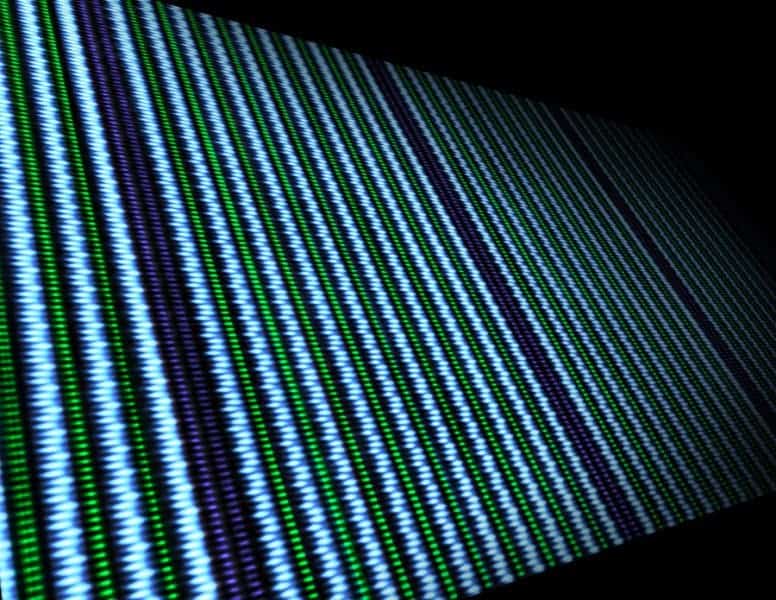A new material could pave the way for an entirely new generation of computers — one that packs in a lot more processing power while consuming only a fraction of the energy.

A false-colored electron microscopy image shows alternating lutetium (yellow) and iron (blue) atomic planes.
Image credits Emily Ryan and Megan Holtz / Cornell.
Known as a magnetoelectric multiferroic material, the new substance is made out of distinct atom-thick layers sandwiched together which shows magnetic and electrical properties at room temperature. The thin film is magnetically polarized, and this property can be flipped — the two states encoding the 1’s and 0’s that underpin our digital systems.
The researchers started with a thin, atomically-precise film of hexagonal lutetium iron oxide, or LuFeO3 — a material known to be ferroelectric, but not particularly magnetic. It’ consists of alternating layers of lutetium- and iron-oxide layers. Then, through a technique known as molecular-beam epitaxy, they “spray-painted” one extra monolayer of iron oxide for every 10 atomic repeats of the single-single monolayer pattern.
“We were essentially spray painting individual atoms of iron, lutetium and oxygen to achieve a new atomic structure that exhibits stronger magnetic properties,” said Darrell Schlom, a materials science and engineering professor at Cornell and senior author of a study.
The result was a new material that combines a phenomenon in lutetium oxide called “planar rumpling” with the magnetic properties of iron oxide to achieve multiferroic properties at room temperature. Heron explains that lutetium shows displacements on an atomic level called rumples. These can be moved around using an electric field and can shift the magnetic field of the neighboring iron oxide layer from positive to negative. So in essence, the team developed a material whose magnetic properties can be altered accurately with electricity — a “magnetoelectric multiferroic”.
“Before this work, there was only one other room-temperature multiferroic whose magnetic properties could be controlled by electricity,” said John Heron, assistant professor in the Department of Materials Science and Engineering at the University of Michigan.
“That electrical control is what excites electronics makers, so this is a huge step forward.”
Room-temperature multiferroics require much less power to write on and read than the semiconductor-based systems we use today. And, if you cut the power, the data remains encoded. Combine these two properties and you get computers that use only brief pulses of energy to function instead of the constant flow required by our current computers — as little as 100 times less energy. So, needless to say, electronics experts are always on the lookout for new room-temperature multiferoics.
“Electronics are the fastest-growing consumer of energy worldwide,” said Ramamoorthy Ramesh, associate laboratory director for energy technologies at Lawrence Berkeley National Laboratory.
“Today, about 5 percent of our total global energy consumption is spent on electronics, and that’s projected to grow to 40-50 percent by 2030 if we continue at the current pace and if there are no major advances in the field that lead to lower energy consumption.”
Heron thinks that we’re still a ways off from a viable multiferroic, likely a few years off. But the team’s work brings the field of electronics closer to developing devices which can maintain high computing speeds while consuming less power. If the industry will keep following Moore’s law — which predicts that the computing power of integrated circuits will double every year — such advances will be vital. Moore has been right since the 1960, but silicon-chip technology may be reaching its limits — whatever happens, we may not be able to power it for very long.
The full paper “Atomically engineered ferroic layers yield a room-temperature magnetoelectric multiferroic” has been published in the journal Nature.









